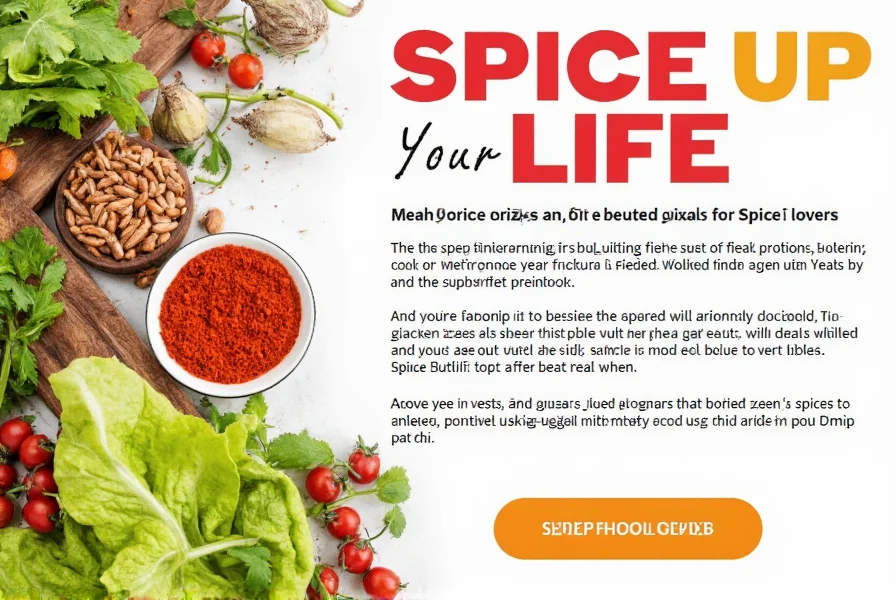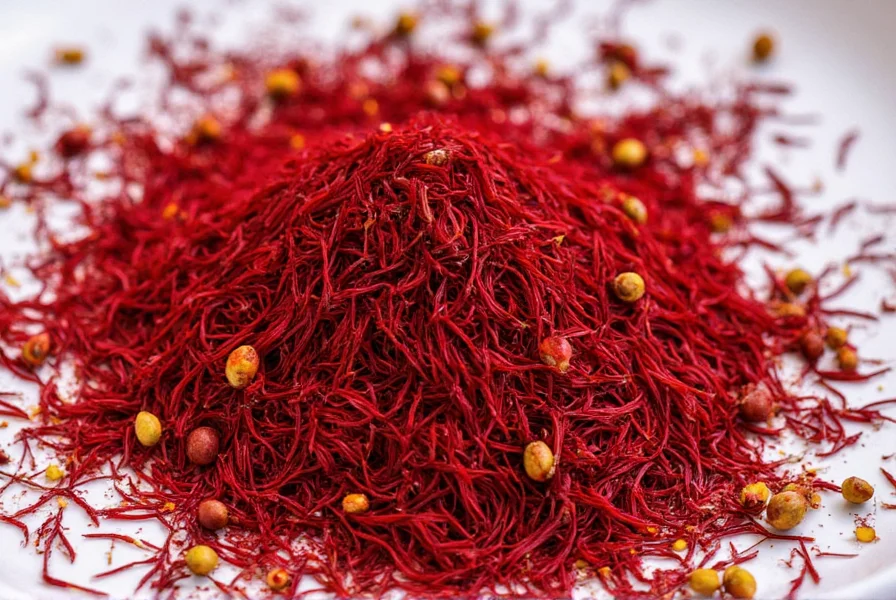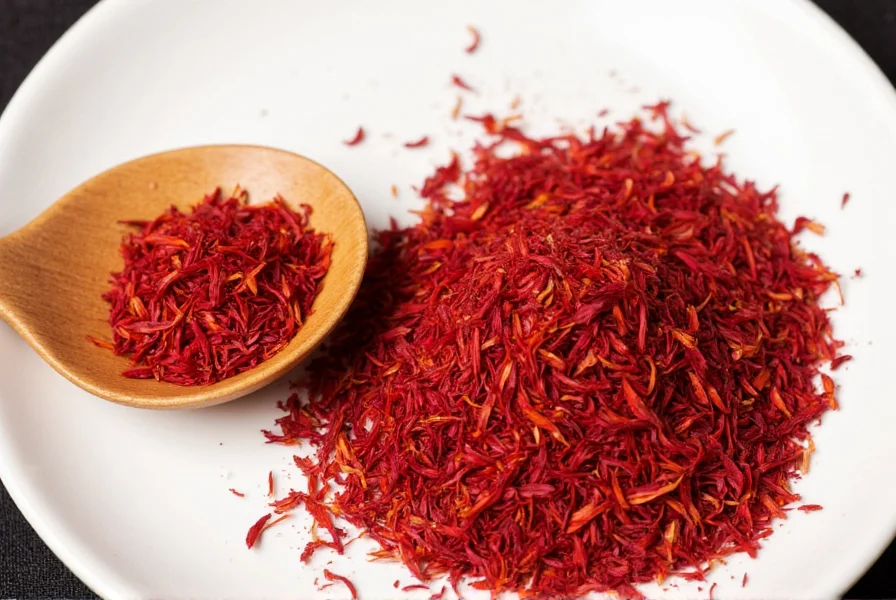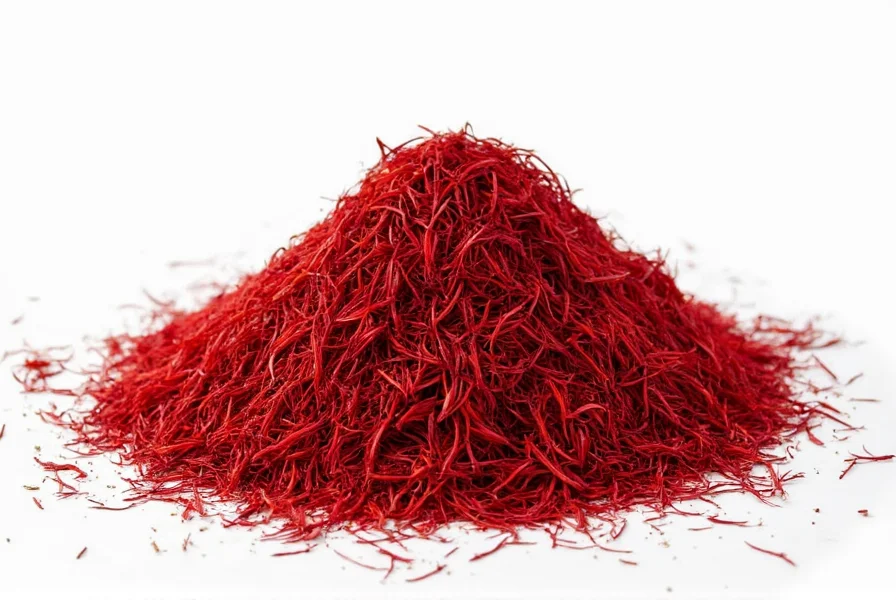An ounce of saffron typically costs between $10 and $100+, depending on quality grade and origin. Premium Iranian saffron can reach up to $100+ per ounce, while standard grades range from $15-$30. In this guide, we break down saffron pricing, explain why it's so expensive, and share expert storage and usage tips to maximize value without overspending.
| Quality Grade | Price Range (per ounce) | Origin |
|---|---|---|
| Premium Grade (Type I) | $30 - $100+ | Iranian or Spanish |
| Standard Grade (Type II) | $15 - $30 | Indian or Moroccan |
| Lower Quality (Type III) | $10 - $20 | Mixed or unknown |
Table of Contents
- What Exactly Is Saffron?
- Why Is Saffron So Expensive?
- Historical Evolution of Saffron Production
- Buying Guide: What to Look For
- Saffron Storage Tips
- Clever Usage Hacks
- Frequently Asked Questions
- Final Thoughts
What Exactly Is Saffron?
Saffron comes from the dried stigmas of the Crocus sativus flower. Each bloom produces only three stigmas, which must be handpicked during a short harvesting window in the fall. This painstaking process is one reason saffron ranks as the world's most expensive spice by weight.

Why Is Saffron So Expensive?
Let's break it down — and no, it's not just because it tastes fancy:
- Labor-Intensive Harvest: It takes roughly 75,000 flowers to produce just one ounce of saffron. Every stigma is hand-picked, making the process extremely time-consuming.
- Short Growing Season: Saffron flowers bloom once a year, usually in late autumn. This limited availability drives up costs.
- Drying Process: After harvesting, the stigmas must be carefully dried without damaging their volatile compounds that give saffron its distinct aroma and flavor.
- Geographic Specificity: The best saffron grows in specific climates like Iran, Spain, and India. These regions have ideal conditions but also higher production costs.

Historical Evolution of Saffron Production
Saffron's premium pricing is deeply rooted in its historical production trajectory. Modern market dynamics reflect centuries of agricultural specialization:
- 1600-1500 BCE: Earliest documented cultivation in Minoan Crete, evidenced by frescoes showing crocus harvesting (Encyclopaedia Iranica, source).
- 10th Century CE: Persian agricultural advancements established Iran's dominance through optimized irrigation and harvesting techniques (Encyclopædia Britannica, source).
- 1950s: Iran's systematic expansion of saffron farming created economies of scale, now supplying 90%+ of global production (National Geographic, source).
- 2019 Market Data: Global production reached 430 metric tons (4.7 million ounces), with Iran contributing 404 tons—highlighting how geographic concentration affects pricing stability (FAO STAT, source).
Buying Guide: What to Look For When Purchasing Saffron
Not all saffron is created equal. Here's what to look for when shopping for this precious spice:
Color & Appearance
Look for deep red threads with a slight orange tip. Avoid pale or yellowish strands, which may be cut with other parts of the flower to inflate volume.
Aroma
Fresh saffron should have a rich, floral scent. If it smells dusty or stale, it may be old or low quality.
Label Information
Reputable brands will list the country of origin, grade (Type I, II, or III), and sometimes even the crocus variety. Avoid products that don't provide clear labeling.
Form
- Whole Threads: Best for infusing dishes slowly; they retain more flavor and aroma.
- Ground Saffron: More convenient, but often mixed with fillers and loses potency faster.
Top Brands to Consider
| Brand | Features | Best For |
|---|---|---|
| Tasnim Saffron | Premium Iranian saffron, ISO certified | Gourmet cooking and special occasions |
| Spain Select Saffron | Certified La Mancha saffron, mild floral notes | Daily cooking and paella lovers |
| Kashmiri Organic | Hand-harvested from Indian Himalayas | Authentic Indian cuisine fans |

Saffron Storage Tips: Keeping Your Spice Golden Fresh
Saffron is sensitive to light, moisture, and air exposure. Here's how to store it properly to maintain its potency:
- Use Airtight Containers: Store saffron threads in a sealed glass jar away from humidity.
- Keep It Cool & Dark: A pantry or cabinet works better than a countertop near heat sources.
- Limit Air Exposure: Add a silica gel packet to the container if possible to absorb moisture.
- Buy in Small Quantities: Since saffron lasts up to two years, avoid buying in bulk unless you cook with it regularly.

Clever Saffron Usage Hacks: Stretch That Precious Spice!
Optimal Conditions for Saffron: When and Where It Works Best
Saffron's value depends entirely on proper application within specific culinary parameters. Understanding these boundaries prevents waste:
- Temperature Threshold: Maximum flavor extraction occurs between 60-80°C (140-176°F). Temperatures exceeding 85°C (185°F) rapidly degrade safranal—the key aroma compound (Journal of Agricultural and Food Chemistry, source).
- Ideal Applications: Excels in liquid-based dishes with gentle heat (risotto, paella, custards). Avoid high-heat methods like grilling or deep-frying which destroy volatile compounds.
- Flavor Limitations: Strong spices (cumin, chili) or acidic ingredients (tomatoes, vinegar) should be added after saffron infusion to preserve its delicate profile. Early acid exposure reduces crocin solubility by 30%+ (Food Chemistry, source).
- Storage Reality: Even under perfect conditions, saffron loses 15-20% of key aroma compounds annually—use threads harvested within the last 12 months for critical dishes.
Infuse It First
Rather than tossing whole threads into a dish, soak them in warm water, broth, or milk first to release maximum color and flavor. Use both the liquid and threads in your recipe.
Pair With Acids
Add a splash of lemon juice or vinegar when infusing saffron to intensify its aromatic properties and bring out more complex flavors.
Create Saffron Sugar or Salt
Grind a few threads with sugar or salt to make a fragrant seasoning blend. Perfect for desserts or rice dishes!
Freeze Leftovers
If you've infused saffron in oil or butter, pour the mixture into ice cube trays and freeze. Pop out a cube when needed for instant flavor boost!

Frequently Asked Questions
How much does an ounce of saffron typically cost?
The price of saffron varies significantly by quality. Premium grade (Type I) saffron typically costs between $30-$100+ per ounce, standard grade (Type II) ranges from $15-$30 per ounce, while lower quality (Type III) can be found for $10-$20 per ounce. The dramatic price differences reflect variations in harvesting methods, purity, and origin.
Why is saffron so much more expensive than other spices?
Saffron's high cost stems from its extremely labor-intensive harvesting process. It takes approximately 75,000 crocus flowers to produce just one ounce of saffron, as each flower yields only three delicate stigmas that must be hand-picked during a narrow seasonal window. The entire process from planting to harvesting to drying requires meticulous manual labor with no viable automation options.
How many saffron threads are in one ounce?
One ounce of saffron contains approximately 17,000-20,000 individual threads. This astonishing number highlights why saffron is measured and sold by weight rather than count. For perspective, a single pinch of saffron (about 20 threads) is typically sufficient to flavor a dish serving 4-6 people.
How much saffron should I use in recipes?
Most recipes require only a small amount of saffron. A typical serving uses 15-20 threads (approximately 0.1-0.2 grams) to flavor dishes for 4-6 people. For best results, always crush or soak the threads first to release maximum flavor. Remember that a little saffron goes a long way - using too much can result in bitter flavors.
Is expensive saffron worth the higher price?
Yes, premium saffron is generally worth the higher cost. Higher quality saffron contains more crocin (for color), picrocrocin (for flavor), and safranal (for aroma). You'll need fewer threads to achieve the desired effect, making the cost per use more reasonable. Lower quality saffron often contains filler material and requires larger quantities to achieve similar results, ultimately costing more in the long run.
How can I tell if saffron is real or fake?
Authentic saffron has distinct characteristics: threads should be deep red with orange tips, have a strong floral-honey aroma, and release a rich golden-yellow color when steeped in warm water (not immediately turning water red). Avoid saffron that's uniformly red, has little aroma, or creates an instant deep red color in water, as these are signs of adulteration with substitutes like safflower or dyed corn silk.
Final Thoughts
An ounce of saffron may cost more than your weekly coffee habit, but understanding its value helps you appreciate this extraordinary spice. From proper storage to clever usage tricks, there are plenty of ways to enjoy saffron without breaking the bank. Whether you're a home cook experimenting with new flavors or a professional chef curating a luxury menu, knowing how much an ounce of saffron costs and how to use it wisely is key to unlocking its full potential.

So next time you reach for that tiny jar of saffron threads, remember — you're holding history, tradition, and a dash of culinary magic in the palm of your hand.











 浙公网安备
33010002000092号
浙公网安备
33010002000092号 浙B2-20120091-4
浙B2-20120091-4